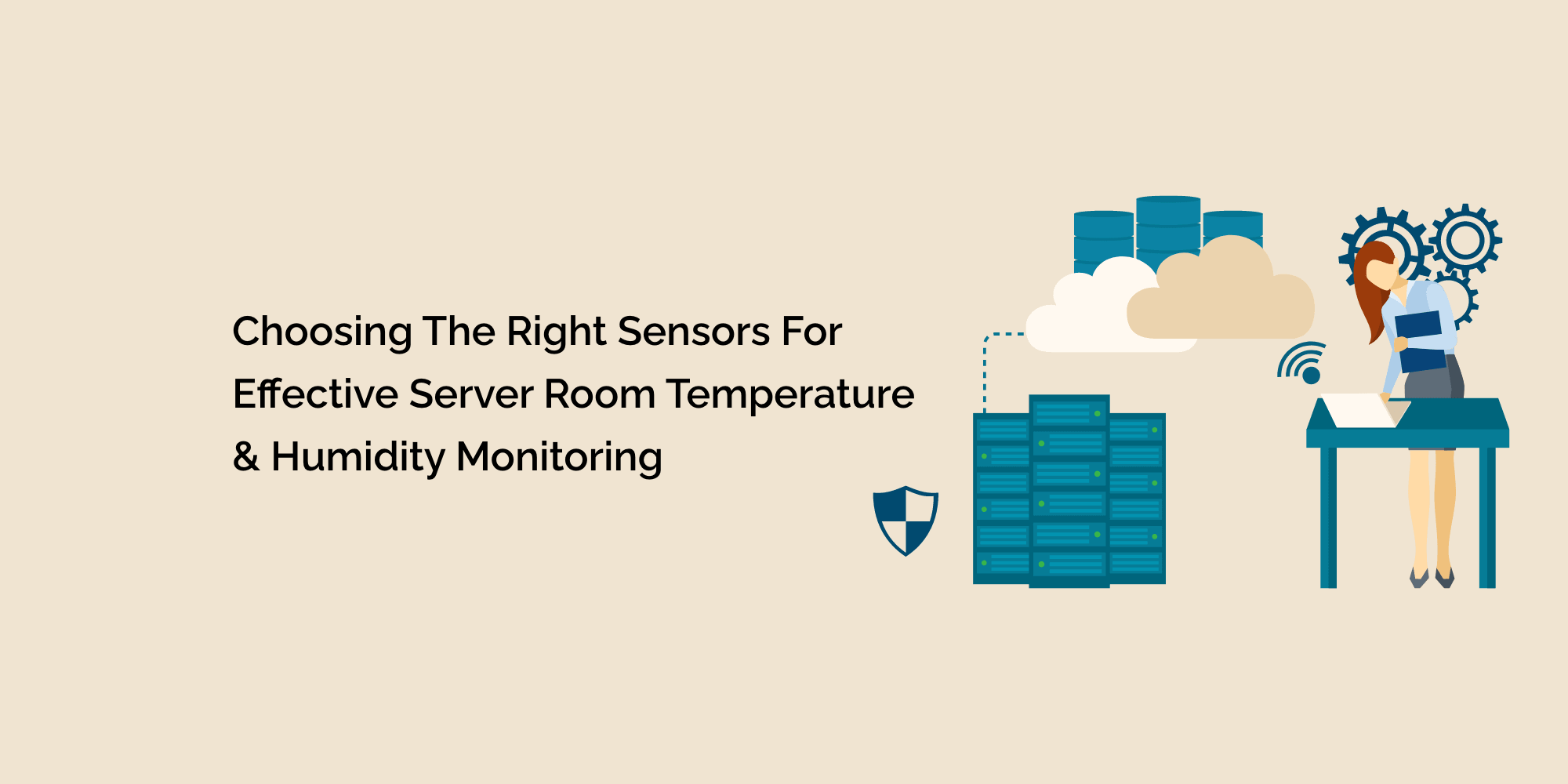Server room temperature and humidity monitoring are critical for maintaining optimal conditions and ensuring the reliable operation of servers. To accurately monitor these environmental factors, it is essential to choose suitable sensors that meet the specific needs of your server room. This blog will explore the importance of selecting suitable sensors for effective temperature and humidity monitoring, discuss key considerations in sensor selection, and provide guidance on choosing sensors that deliver accurate and reliable data. By making informed choices, businesses can optimize their server room monitoring systems and enhance their server infrastructure's overall performance and longevity.
Understanding the Importance of Sensor Selection
-
Sensor Accuracy: Accurate temperature and humidity readings are vital for maintaining optimal server room conditions. Choosing sensors with high accuracy ensures that the data collected is reliable and accurately represents the environmental conditions.
-
Compatibility: Selecting sensors that are compatible with your monitoring system and infrastructure is crucial. Consider the communication protocols, connectivity options, and compatibility with monitoring software to ensure seamless integration and data synchronization.
- Range and Resolution: Assess your server room's temperature and humidity range requirements. Choose appropriate range and resolution sensors to capture variations within the desired operating conditions.
Critical Considerations in Sensor Selection
-
Sensor Type: Various sensor types are available for temperature and humidity monitoring, including thermocouples, resistance temperature detectors (RTDs), thermistors, and capacitive or resistive humidity sensors. Evaluate the advantages and limitations of each sensor type and choose one that aligns with your specific monitoring needs.
-
Calibration and Calibration Interval: Consider the calibration requirements of the sensors. Some sensors may require regular calibration to maintain accurate readings. Assess the calibration process and frequency to ensure consistent accuracy of the collected data.
- Sensor Placement: Determine the optimal sensor placement locations within your server room. Consider factors such as proximity to heat sources, airflow patterns, and potential areas of temperature variation. Placing sensors in representative locations allows for comprehensive monitoring of the overall environmental conditions.
Factors Influencing Sensor Performance
-
Environmental Conditions: Consider the operating conditions and environment of your server room. Assess factors such as temperature extremes, humidity levels, and contaminants or pollutants affecting sensor performance. Choose sensors designed to withstand and operate reliably in the intended conditions.
-
Response Time: Evaluate the sensors' response time, as it determines how quickly they can detect and report changes in temperature and humidity. Sensors with faster response times enable prompt detection of environmental variations, allowing for quicker response and mitigation of potential issues.
- Long-Term Stability: Assess the long-term stability and reliability of the sensors. Look for sensors with a proven track record of accuracy and longevity, as this ensures consistent and reliable performance over an extended period.
Sensor Maintenance and Support
-
Maintenance Requirements: Understand the maintenance requirements of the chosen sensors. Some sensors may require periodic cleaning, calibration, or replacement to ensure accurate and reliable data. Assess the maintenance procedures and consider the associated costs and efforts.
- Manufacturer Support: Choose sensors from reputable manufacturers known for their quality products and dedicated customer support. Access to technical assistance, documentation, and firmware updates can greatly simplify troubleshooting and ensure optimal sensor performance.
Certainly! Here are some frequently asked questions (FAQs) related to choosing the suitable sensors for effective server room temperature and humidity monitoring:
How can I determine the appropriate sensor placement in my server room?
Strategically placing sensors throughout the server room is essential for comprehensive monitoring. Consider factors such as proximity to heat sources, airflow patterns, and potential areas of temperature variation. Representative sensor placement allows for accurate and representative tracking of the overall environmental conditions.
Should I consider the long-term stability of sensors in my selection process?
Yes, long-term stability is essential for reliable and consistent performance. Sensors with proven strength and longevity ensure accurate readings over extended periods, reducing the need for frequent replacements and maintaining the integrity of the monitoring system.
How do I ensure compatibility between the sensors and my monitoring system?
To ensure compatibility, consider the communication protocols, connectivity options, and compatibility with your chosen monitoring software or system. Choosing sensors that seamlessly integrating with your existing infrastructure simplifies data synchronization and allows for centralized monitoring and management.
Conclusion
Choosing suitable sensors for server room temperature and humidity monitoring is crucial for maintaining optimal environmental conditions and safeguarding server infrastructure. By considering factors such as accuracy, compatibility, range, sensor type, response time, and long-term stability, businesses can select sensors that provide reliable and accurate data. Proper sensor selection ensures effective monitoring, facilitates prompt detection of environmental variations, and enables timely actions to maintain optimal server performance. By investing in high-quality sensors and integrating them with a robust monitoring system, businesses can proactively manage their server room conditions, reduce the risk of equipment failures, and optimize the performance and longevity of their critical IT infrastructure.








